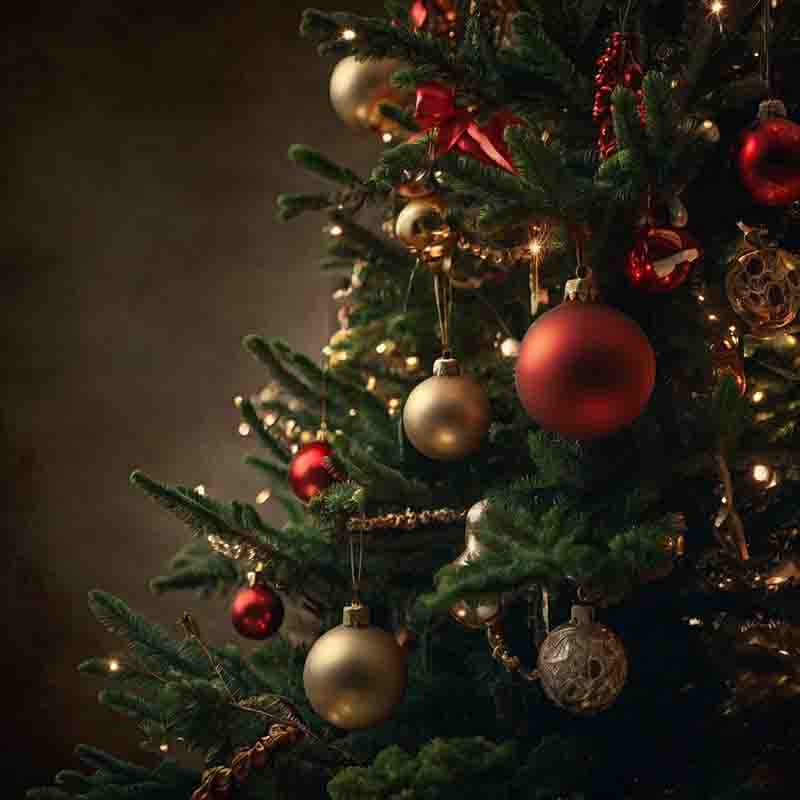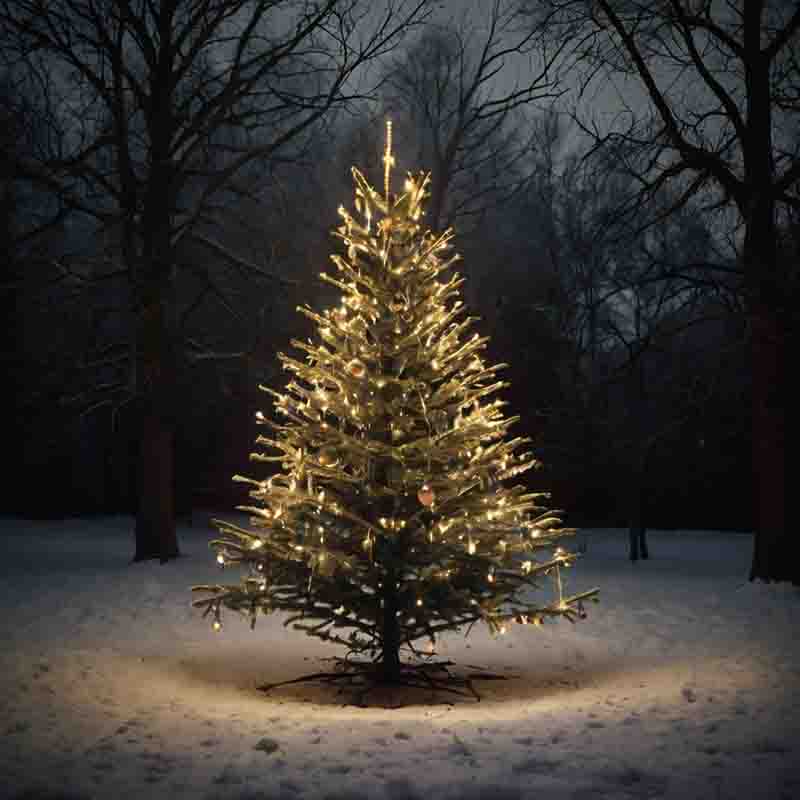The Origins of Christmas
Christmas is a widely celebrated holiday observed on December 25th. It commemorates the birth of Jesus Christ and carries deep religious and cultural significance.

The origins of Christmas date back to early Christianity.
The date was chosen in part to coincide with Roman winter solstice festivals, such as Saturnalia, and the celebration of Sol Invictus.
The holiday grew in importance during the Middle Ages, incorporating local folk traditions, caroling, and feasting.
Today, Christmas is celebrated in diverse ways around the world.
In addition to religious observances, people gather for family meals, decorate their homes, exchange gifts, and enjoy festive entertainment.
Iconic figures like Santa Claus, derived from St. Nicholas and Nordic folklore, play a central role in spreading holiday cheer.
Christmas is a time for reflection, joy, and togetherness. Its mix of historical depth, religious meaning, and festive customs makes it one of the most beloved celebrations worldwide.
12 Facts To Know About Christmas
-
:
-
:
-
:
-
:
-
:
-
:
-
:
-
:
-
:
-
:
-
:
-
:
Christmas Timeline
| Time Period | Description |
|---|---|
| 4th Century AD | The first recorded celebration of Christmas on December 25th as the birth of Jesus in the Roman Empire. |
| 5th Century | Christmas recognized as an official Christian festival. |
| 12th Century | Christmas becomes a more prominent feast in medieval Europe. |
| 16th Century | The Protestant Reformation influences Christmas celebrations in Europe. |
| 17th Century | Puritans in England and America disapprove of Christmas celebrations. |
| 19th Century | The Victorian era sees a revival of Christmas traditions and the popularization of the Christmas tree. |
| 1823 | "A Visit from St. Nicholas" (commonly known as "The Night Before Christmas") is published. |
| 1843 | Charles Dickens publishes "A Christmas Carol," contributing to the modern Christmas spirit. |
| 1870 | Christmas is declared a federal holiday in the United States. |
| 1931 | Coca-Cola popularizes the modern image of Santa Claus through its advertising. |
| 1941 | Irving Berlin writes "White Christmas," becoming one of the best-selling songs of all time. |
| 1965 | "A Charlie Brown Christmas" airs, becoming a holiday classic. |
| 1970s | Commercialization of Christmas accelerates with the rise of consumerism. |
| 1984 | "Do They Know It's Christmas?", a charity song written in 1984 raised money for the hunger famine in Ethiopia in 1983-1985. |
| 2000s | Despite the emergence of the Internet, Christmas cards are still being sent by regular mail |
| Present | Christmas continues to be a popular holiday, although for some people it is a preference to proclaim "Happy Holidays" instead of "Merry Christmas". |
Christmas: Light Up the Night

Christmas embodies the spirit of joy, affection and togetherness. Whether through the extensive range of traditions, the symbolism of colors and decorations or the influence of marketing and modern celebrations, Christmas remains a vibrant and precious time of year.
German American Christmas
Christmas is heavily influenced by German traditions. Many aspects of modern Christmas, such as the Christmas tree, Advent calendars and traditional festive foods, have their roots in German customs first brought to the United States by German immigrants.
The fusion of German and American traditions has created a unique and multifaceted portrayal of Christmas celebrations combining rich immigrant heritage with the expanded American Christmas experience.
The Christmas Tree
One of the most enduring and iconic contributions is the introduction of the Christmas tree tradition.
German immigrants brought this cherished tradition to America, where it quickly gained popularity during the 19th century.
Today, the Christmas tree stands as a symbol of the holiday season for millions of American families, adorned with lights, ornaments, and tinsel, creating a magical centerpiece that captures the spirit of the festivities.
Advent Calendars
Originating in Germany, these calendars are designed to count down the days leading up to Christmas, with each day marked by opening a numbered door or compartment that reveals a small treat or surprise.
This charming tradition, introduced to the U.S. by German immigrants, has become a cherished practice in many American households.
The anticipation and daily ritual of opening Advent calendar doors add an extra layer of excitement to the holiday season, fostering a sense of unity and shared joy among family members.
Christmas Markets
The enchanting atmosphere of Christmas markets, a staple in German holiday traditions, has also found its way into American celebrations thanks to the influence of German immigrants.
These festive markets, characterized by stalls offering a variety of seasonal goods, treats, and crafts, create a vibrant and communal space.
The German-American community has embraced and shared this tradition, leading to the establishment of Christmas markets across the U.S.
These markets not only provide an opportunity for people to purchase unique and handmade gifts but also contribute to the festive ambiance of the holiday season, fostering a sense of community and shared celebration.
Festive Foods
Culinary traditions brought by German immigrants have left an indelible mark on the American Christmas feast.
One such example is stollen, a sweet bread enriched with dried fruit, nuts, and spices.
This delectable treat, with its origins in Germany, has become a beloved addition to holiday tables across the United States.
Similarly, the art of gingerbread cookie making, influenced by German baking techniques, has become a cherished Christmas activity for families.
These cookies, often shaped into festive figures and decorated with icing and candies, add a touch of whimsy to the holiday season.
Marzipan, another candy with German roots, has also become a popular ingredient in Christmas desserts and contributes to the rich array of flavors that make up the American Christmas culinary experience.
German American Christmas Experience
In addition to specific customs, German-American communities often showcase their cultural heritage through Christmas events and celebrations.
Festive processions with traditional German costumes, music and dancing contribute to the diverse festivities.
Performances of German Christmas carols and displays of holiday crafts further highlight the rich cultural contributions of German immigrants.
These events serve not only to connect the community with its heritage but also to share the beauty and warmth of German Christmas traditions with a broader audience, fostering understanding and appreciation for cultural diversity during the holiday season.
Christmas Traditions from Around the World
Christmas is celebrated in various ways around the world, each culture bringing its unique traditions and customs to the holiday season.
As we explore these different Christmas traditions from around the world, it becomes clear that the holiday is not only a time of joy, but also a reflection of the unique regional cultures that shape our global community.
Here is a range of such varied Christmas traditions:
-
Japan - KFC Christmas Dinner: In Japan, it's a popular tradition to have a Christmas meal from Kentucky Fried Chicken (KFC). Due to a successful marketing campaign in the 1970s, many Japanese families indulge in KFC as a festive treat.
-
Iceland - The Yule Lads: In Iceland, there is a tradition of the Yule Lads, mischievous characters who visit children on the 13 nights leading up to Christmas. Each night, children place a shoe in the window, and the Yule Lads leave small gifts or potatoes, depending on the child's behavior.
-
Ukraine - Spider Webs as Decorations: Ukrainian Christmas trees might feature spider webs as decorations. According to folklore, a poor widow woke up to find her tree covered in cobwebs. When the morning sunlight touched the webs, they turned into gold and silver, bringing fortune to the family.
-
Ethiopia - Ganna, a Unique Christmas Game: In Ethiopia, Christmas is celebrated with a game called Ganna, a traditional hockey-like sport. Families and friends gather to play, creating a festive and communal atmosphere.
-
Venezuela - Roller Skating to Mass: In the capital city of Caracas, it is a tradition for people to roller skate to the early morning Christmas Mass. The streets are closed to cars, and the city comes alive with the sound of church bells and skates.
-
Guatemala - La Quema del Diablo (Burning of the Devil): In Guatemala, people clean their houses thoroughly in the weeks leading up to Christmas. The collected dirt is then used to create effigies of the devil, which are burned on December 7th, symbolizing the cleansing of evil spirits before the holiday.
-
Philippines - Giant Lantern Festival: In the city of San Fernando, locals celebrate the Giant Lantern Festival, showcasing elaborately designed lanterns. The festival has become a major attraction, drawing visitors from around the world.
-
India - Christmas Banana Trees: In southern India, some communities decorate banana or mango trees instead of traditional evergreen trees. The trees are adorned with paper decorations and candles, creating a unique and colorful festive atmosphere.
-
Czech Republic - Predicting the Future: In the Czech Republic, unmarried women stand with their backs to the door on Christmas Eve and throw a shoe over their shoulder. If the toe points towards the door when it lands, it's believed the woman will get married soon.
-
Australia - Beach Celebrations: In Australia, where Christmas falls during the summer, it's common for families to celebrate with a festive picnic or barbecue on the beach. Some even participate in events like the "Carols by Candlelight" concerts held outdoors.
-
Russia - Ded Moroz and Snegurochka: In Russia, Christmas is celebrated on January 7th according to the Julian calendar observed by the Russian Orthodox Church. The celebrations are deeply rooted in religious traditions and are accompanied by unique customs and festivities. A central figure in Russian Christmas celebrations is Ded Moroz (Grandfather Frost), who is accompanied by his granddaughter Snegurochka (Snow Maiden). These characters are akin to Santa Claus and his helper in Western traditions.
These different traditions show how diverse Christmas is celebrated all over the world and give the Christmas season its very own flavor and perspective.
Creating Memorable Christmas Moments
Beyond the historical and cultural aspects, the true magic of Christmas lies in the creation of cherished moments.
Crafting personalized Christmas cards serves as a heartwarming way to express love and share memories with family and friends.
Incorporating personal photos, handwritten messages, and unique designs adds a touch of individuality.
Thoughtful gift-giving, from personalized ornaments to DIY creations, fosters a sense of connection.
Mindful celebration encourages a focus on the present rather than gifts and creates lasting memories that go beyond material gifts.
Christmas: FAQ
Are you curious about music, art, technology, fashion, lifestyle, and beer?
If so, then you need to subscribe to the free Likewolf newsletter.
100% privacy. When you sign up, we'll keep you posted.

Likewolf's Typewriter
Likewolf writes about music, art, technology, fashion, lifestyle, and beer
LikewolfGerman American Cuisine
The rich culinary heritage of German immigrants